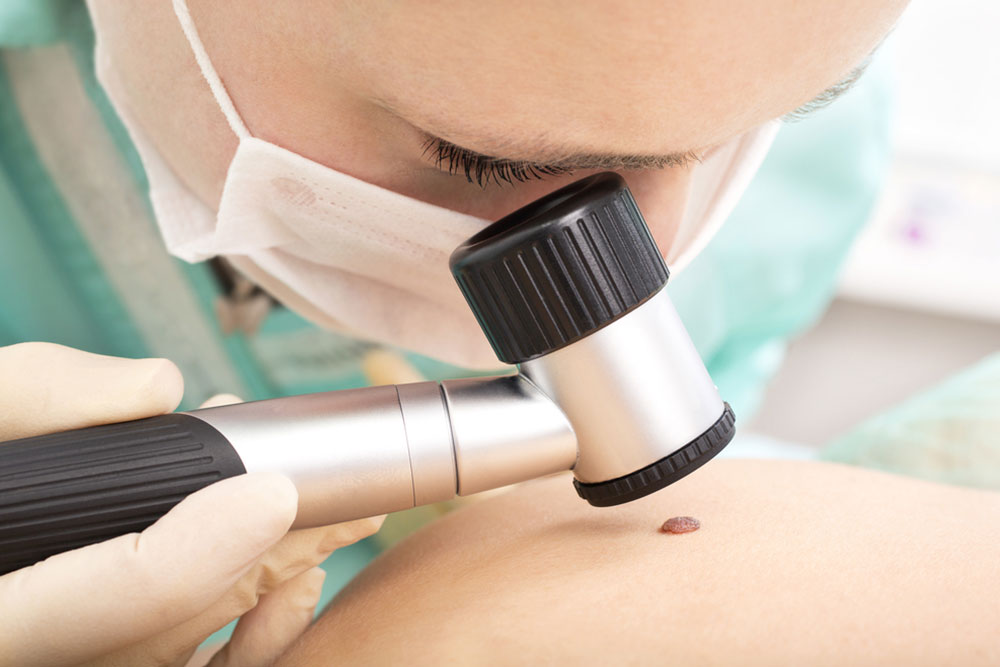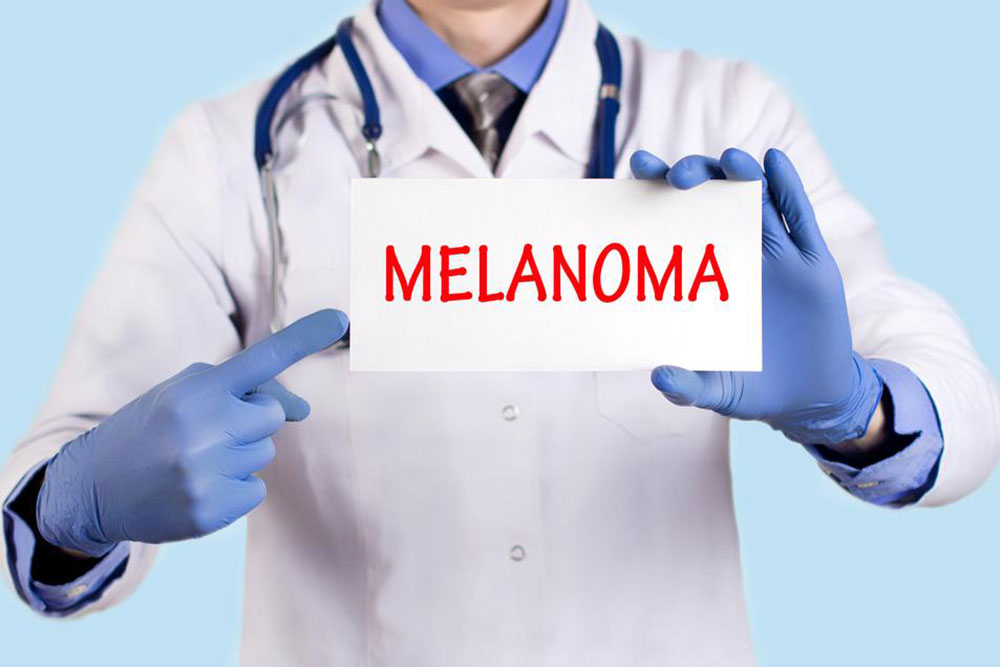Comprehensive Guide to Advanced Melanoma: Symptoms, Diagnosis, and Treatment Options
This comprehensive guide delves into advanced melanoma, covering symptoms, diagnosis, and the latest treatment options. It emphasizes the importance of early detection through self-examinations and medical consultations. The article explores surgical, chemotherapeutic, radiative, immunotherapeutic, and targeted therapies used in managing stage four melanoma. Cutting-edge advancements like immunotherapy and personalized medicine are highlighted as game-changers in improving patient outcomes. Understanding these facets enables more effective management and raises awareness about this deadly skin cancer, promoting better survival chances through early intervention and tailored treatments.

Comprehensive Guide to Advanced Melanoma: Symptoms, Diagnosis, and Treatment Options
Melanoma stands as one of the most aggressive and deadly forms of skin cancer, originating from abnormal growth of pigment-producing cells known as melanocytes. This type of cancer is primarily linked to exposure to ultraviolet (UV) radiation from the sun or tanning beds, and it is characterized by the development of dark, irregular moles or lesions on the skin. While early-stage melanoma is often curable through timely intervention, advanced stages pose significant health challenges due to metastasis and spread to vital organs. Recognizing the signs and understanding the available treatment options are crucial steps toward improving survival rates and quality of life for affected individuals.
In the initial stages, melanoma may appear as a dark or abnormal mole that changes in size, shape, or color over time. These changes can be subtle but are critical indicators for early detection. As the disease progresses, especially into stage four—the most advanced stage—cancer cells have disseminated beyond local skin lesions into the lymphatic system and other essential organs such as the lungs, liver, bones, brain, and stomach. The transition from localized tumor to widespread metastatic disease underscores the importance of vigilant monitoring and prompt medical consultation upon noticing any suspicious skin changes.
Understanding the symptoms associated with advanced melanoma can be life-saving. Elevated or hardened lesions, ulcerations, bleeding, and enlarged lymph nodes are common signs of metastasis. The skin surrounding the primary tumor may break down, leading to open sores or ulcers. These symptoms often indicate that cancer has become more aggressive and difficult to treat. Therefore, regular self-examinations and professional skin checks play vital roles in early detection. Utilizing the ABCDE criteria—which stands for Asymmetry, Border irregularity, Color variation, Diameter larger than a pencil eraser, and Evolution of the lesion—is highly recommended for identifying potentially dangerous moles or skin changes at home.
A – Asymmetry: Uneven or asymmetrical spots that do not match on both sides.
B – Border: Irregular, blurry, or scalloped edges of the lesion.
C – Color: Presence of multiple colors such as black, brown, tan, red, or blue within the same mole.
D – Diameter: Lesions larger than 6 millimeters, roughly the size of a pencil eraser.
E – Evolution: Noticeable changes in size, shape, color, or symptoms like itching or bleeding over time.
Diagnosing stage four melanoma involves an array of sophisticated medical procedures to determine the extent of spread. Routine blood tests, imaging studies like ultrasounds, CT scans, MRIs, and biopsies are used to assess the presence of metastasis and plan appropriate treatment strategies. Continuous advancements in diagnostic techniques have improved accuracy and early identification of metastatic disease, leading to better patient outcomes.
Preventive measures and regular skin checks are essential components of early detection. Healthcare professionals recommend monthly self-examinations and annual visits to dermatologists, especially for individuals with risk factors such as fair skin, a history of sunburns, or previous skin cancer diagnoses. Early recognition of suspicious lesions significantly increases the chances of successful treatment and survival.
Effective Treatment Modalities for Advanced Melanoma
When melanoma advances to a late stage, a multidisciplinary approach is crucial. Treatment options are carefully selected based on the tumor's location, the extent of metastasis, the patient’s overall health, and genetic factors. Here are some of the primary therapies used in managing advanced melanoma:
Surgical Intervention: Surgical removal remains a cornerstone, especially when the tumor is localized or has limited spread. Surgeons excise the primary melanoma along with nearby lymph nodes to reduce the risk of further metastasis. In cases where multiple lesions are present, comprehensive excision can help control disease progression.
Chemotherapy: This involves the use of powerful drugs that systematically target and destroy rapidly dividing cancer cells. Chemotherapy can be administered orally or intravenously and is often used when other options are ineffective or unsuitable. However, in advanced melanoma, chemotherapy alone has limited success, and it is frequently combined with newer therapies.
Radiation Therapy: High-energy radiation beams are utilized to target and destroy cancer cells in specific areas. Radiation is typically employed to palliate symptoms, treat brain metastases, or in conjunction with surgery to eradicate residual cancer cells.
Immunotherapy: A groundbreaking approach in recent years, immunotherapy works by boosting the patient's immune system to better recognize and attack melanoma cells. Agents such as checkpoint inhibitors (e.g., pembrolizumab, nivolumab) have significantly improved survival rates in advanced melanoma cases.
Targeted Therapy: This innovative treatment targets specific mutations within melanoma cells, such as BRAF or MEK gene mutations. Medications like vemurafenib and dabrafenib are designed to interfere with the molecular pathways that promote tumor growth, offering personalized treatment options for patients with specific genetic profiles.
In addition to these standard treatments, ongoing clinical trials are exploring novel therapies, combination regimens, and advanced modalities aimed at inoperable or resistant melanoma cases. Personalized medicine, based on genetic analysis, provides tailored treatment plans to maximize efficacy and minimize side effects.
Managing advanced melanoma often requires a comprehensive approach that combines various therapies to control disease progression, alleviate symptoms, and improve quality of life. Early diagnosis remains the most effective way to ensure treatment success, highlighting the importance of public awareness, routine skin checks, and prompt medical intervention.
In conclusion, understanding the symptoms, diagnosis, and treatment options for advanced melanoma is essential for patients and healthcare providers alike. Advances in targeted therapies and immunotherapies continue to transform the prognosis for melanoma patients, making early detection and personalized treatment the keys to better outcomes. Staying vigilant, practicing self-examinations, and seeking specialized medical care can greatly improve survival rates and overall prognosis for those battling this serious form of skin cancer.





